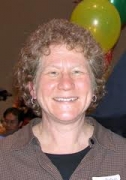Awards
- National Academies - 2007
- American Association for the Advancement of Science

Miriam Zolan is Professor of Biology at Indiana University. She earned her Ph.D. from Stanford University, 1983. She is a fellow of the American Association for the Advancement of Science, a Member of the Faculty Colloquium on Excellence in Teaching (FACET), and she has received the 2000 Teaching Excellence Recognition Award, and the 2001 and 2008 Trustees' Teaching Award.
Her laboratory focuses on genes whose products are necessary for two fundamental activities of eukaryotes, the detection and repair of DNA damage, and the production of gametes by meiosis. It is known that many of the molecular processes of meiosis echo processes of some kinds of DNA repair: homologous sequences synapse; chromosome breaks are made and repaired; and chromatin structure is altered. Therefore, it is likely that many of the gene products involved in these processes are the same. The lab studies the basidiomycete Coprinus cinereus, in which meiosis is naturally synchronous and meiotic cells are particularly amenable to cytogenetic, molecular, and biochemical analyses. The C. cinereus genome has been sequenced and annotated, and genetic and molecular tools for working with this organism are well established.
Our initial genetic analysis revealed four genes required for the survival of gamma irradiation and for meiosis, which function in a common pathway for DNA damage repair. Three of the genes encode proteins previously identified in other organisms and known universally as Mre11, Rad50, and Nbs1, which form a complex required for DNA double-strand break repair, chromosome stability, and meiosis in diverse organisms, including humans. The fourth gene we identified in the pathway, initially called rad9, encodes a large, proline-rich protein whose homologs in other organisms have been shown to affect mitotic sister-chromatid cohesion, gene expression, chromatin structure, and development. The human homolog of rad9, nipbl, encodes a protein defective in about half of the known cases of Cornelia de Lange syndrome, a severe developmental disorder. We have shown that the Rad9/Nipbl protein is required for meiotic sister chromatid cohesion and homolog pairing, and that its function in pairing is partially distinct from its role in cohesion.
Current work in the lab is focused on three inter-related areas. We are investigating the meiotic roles of the Mre11/Rad50/Nbs1 complex, with particular emphasis on the roles of the complex and individual proteins in recombination, synapsis, and meiotic sister-chromatid interactions. We are studying how proteins called cohesins, which are essential for the maintenance of sister-chromatid cohesion, associate with meiotic chromosomes, and the changes in cohesin associations in the absence of sister chromatids or recombination. Finally, in collaboration with Pat Pukkila's lab at the University of North Carolina, we developed whole-transcriptome microarrays, and have used them to study meiotic transcription on a genome-wide level. As part of this study, we identified genes coordinately regulated with those encoding Mre11, Rad50, and Nbs1, and we are developing high-throughput methods to screen these genes for roles in meiosis.
An additional interest of Dr. Zolan's is in helping Biology graduate students prepare for their roles as future faculty, by giving them hands-on practice in designing lessons, and working with them in the study of current topics in teaching and learning. She participates in this graduate training both at the departmental level, by teaching a graduate seminar (Mentored Teaching), and at the University level, by participation in a Teagle Foundation-funded program, in which doctoral students are guided in the process of becoming reflective teachers and in the preparation of teaching portfolios.